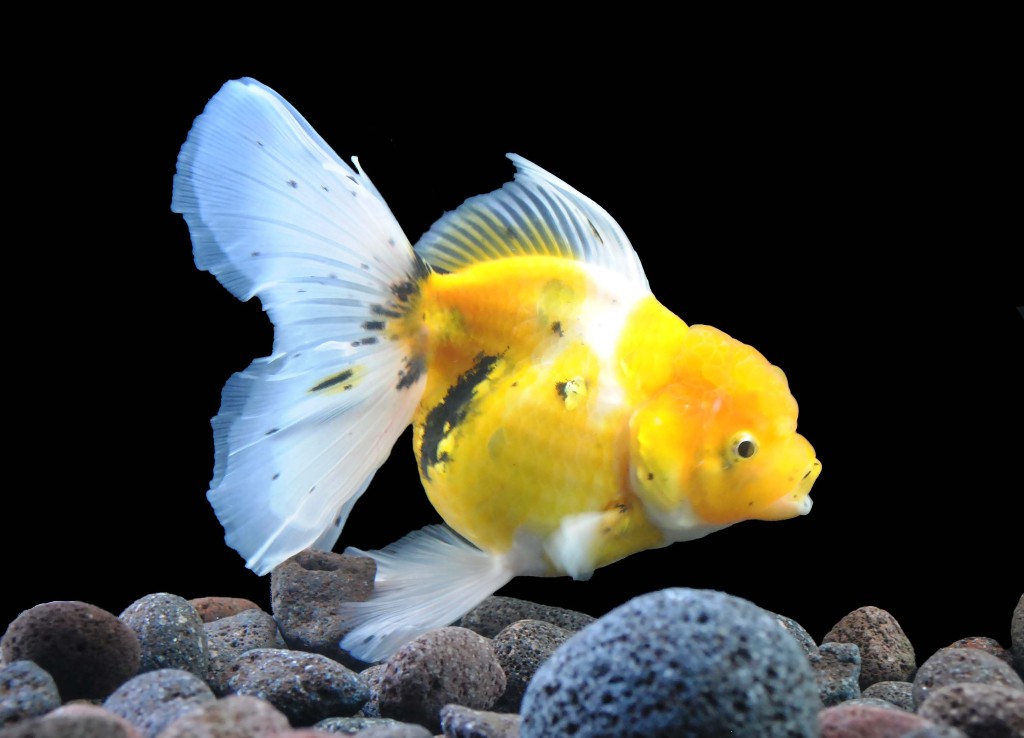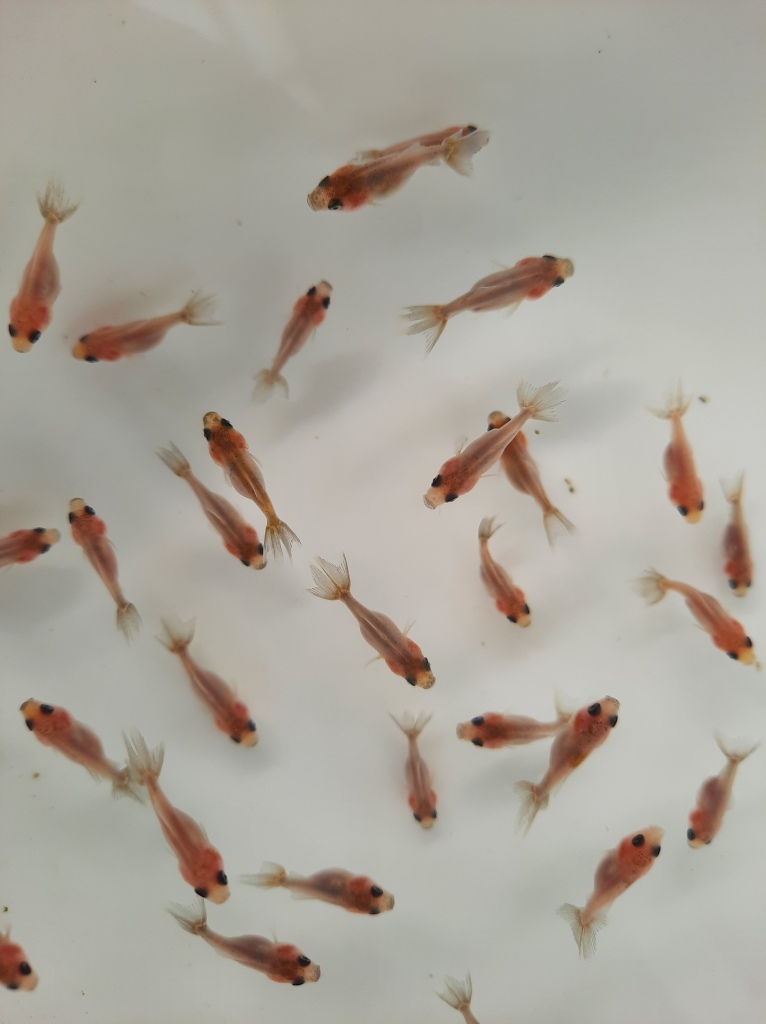I have crossed metallic scales goldfish with transparent one many times. The offspring consists of both types of scales. But I never counted how many for each of them. Since my concentration was mainly to keep the transparent ones, I just cull out the metallic ones without counting. Now I am curious to know the statistics.
I happen to cross my yellow transparent scale oranda (female – left pic) with my yellow metallic scale oranda (male – right pic):
I quickly realize that I made two mistakes which might affect the accuracy of the result. But it already happened, anyway.
First, the counting will be more accurate if I kept all the offspring from the beginning. I did not do it since I had no intention to count at that time. So, I have done the first culling, which is sorting out one-week-old hatchlings with tail defects (seen from above) and small sizes. Assumptions can be made, whether the number of both types being culled out are the same or the percentage of both types being culled out are the same (as the result I will report shortly), but both assumptions are risky. This is one of the weakness.
Second, I forgot whether the transparent scale fish carries the metallic genetics (a cross between transparent and metallic scale parentage) or it is pure transparent already (a mating between transparent and transparent). I fear this might influence how the result will be interpreted.
Admitting these weaknesses, I counted the offspring when they are about three weeks old. Here are some samples of them (not the total number):
Transparent scales: 73 (53.3%)
Metallic scales: 64 (46.7%)
Looking at these numbers, the transparent scales are slightly more than the metallic scales. But I think the difference is not significant, considering the first mistake. I think it is safe to conclude as a rough breeding guideline that the cross between transparent and metallic scales will yield both types of scales with 50:50 ratio.



